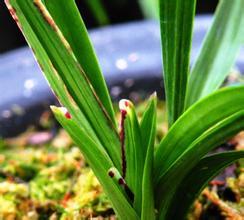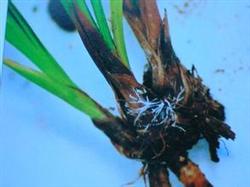Harm and Control of soft Rot of Orchid

Generally speaking, if orchids grow very strong, roots are very developed, its disease resistance is relatively strong. If orchids don't grow very well, coupled with poor maintenance, they are very easy to get sick. Orchids are susceptible to soft rot at this time of year if they are poorly ventilated. Soft rot is a serious disease and spreads rapidly. It has two forms of expression, one is from the beginning of the new seedlings, that is, when the buds have not fully grown, the roots will rot and continue to spread upward, when the disease is serious, it will lead to the death of the whole plant. The other is from the old seedlings start, if the old seedlings appear abnormal toppling grass, leaves have brownish yellow or black spots, we should pay attention to. If it is confirmed that the disease has occurred, isolation shall be carried out first, and the whole pot of grass shall be moved to a ventilated and less humid place in time, and then the diseased plants shall be poured out, and the seedlings connected with it shall be broken off together, and the remaining seedlings shall be disinfected. When spraying, spray the front and back of the leaves, and water the material until it penetrates. All materials with bacteria should be poured out, flower pots should be disinfected, and agricultural streptomycin diluted 500-1000 times can be soaked. As the disease spreads rapidly, prevention must be strengthened. Both cultivation and chemical control are very important. In cultivation and control, the conditions of shading, cooling and ventilation are good, which can form an ecological condition conducive to the growth and development of orchids but not conducive to the propagation and infection of diseases. In terms of chemical control, agricultural streptomycin can be sprayed once every 10-15 days.
- Prev

Flower fertilization
The rational disease of orchid peanut, also known as non-infectious disease, is caused by unsuitable cultivation environment and maintenance measures other than pathogens. Such as the temperature is too high and too low, the light is too strong and too weak, water and fertilizer imbalance, lack of elements, improper use of drugs, harmful gases in the air, toxic substances on the ground pollution and so on. Orchids are common.
- Next

Control of Tillering Rot of Orchid
Orchid tiller rot is a bacterial disease. It mainly occurs on the tillering bud, the disease spot is water-stained mung bean at the base of the bud, and then it becomes a dark green scalded patch, which extends to the outside of the coleoptile, showing dark brown rot, and the diseased leaves are easy to pull out. Control measures: ① to control soil water content, diseased potted flowers should stop watering.
Related
- Fuxing push coffee new agricultural production and marketing class: lack of small-scale processing plants
- Jujube rice field leisure farm deep ploughing Yilan for five years to create a space for organic food and play
- Nongyu Farm-A trial of organic papaya for brave women with advanced technology
- Four points for attention in the prevention and control of diseases and insect pests of edible fungi
- How to add nutrient solution to Edible Fungi
- Is there any good way to control edible fungus mites?
- Open Inoculation Technology of Edible Fungi
- Is there any clever way to use fertilizer for edible fungus in winter?
- What agents are used to kill the pathogens of edible fungi in the mushroom shed?
- Rapid drying of Edible Fungi

